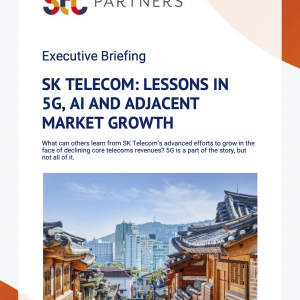Facebook: Telcos’ New Best Friend?
£1,000.00 excl VAT
Facebook has changed substantially since we first analysed the company in 2011. In our latest major report we explore the accuracy of our 2011 predictions regarding users, revenue and strategy. We also examine Facebook’s current aspirations and challenges and explain why, where and how operators should be working with Facebook to build value.
Description
Format: PDF filePages: 50 pagesCharts: 25Author: David PringlePublication Date: March 2015
Table of Contents
- Executive Summary
- How Facebook is changing
- A history of adaptation
- The Facebook exception – no fear, more freedom
- Financials and business model
- Growth prospects for the core business
- User growth
- Monetisation – better targeting, higher prices
- Mobile advertising spend lags behind usage
- The Facebook Platform – Beyond the Walled Garden
- Multimedia – taking on YouTube
- Search – challenging Google’s core business
- Enabling transactions – moving beyond advertising
- Virtual reality – a long-term game
- Takeaways
- Threats and risks
- Facebook fatigue
- Google – Facebook enemy number one
- Privacy concerns
- Wearables and the Internet of Things
- Local commerce – in need of a map
- Facebook and communication services
- Conclusions
- Facebook is spread too thin
- Partnering with Facebook – why and how
- Competing with Facebook – why and how
Table of Figures
- Figure 1: From student matchmaking service to a leading digital commerce platform
- Figure 2: Zuckerberg is pushing hard for the provision of basic Internet services
- Figure 3: Facebook’s user base continues to grow rapidly
- Figure 4: Facebook’s revenue growth has accelerated in the past two years
- Figure 5: Facebook’s ARPU has risen sharply in the past two years
- Figure 6: After wobbling in 2012, investors’ belief in Facebook has strengthened
- Figure 7: Despite a rebound, Facebook’s valuation per user is still below its peak
- Figure 8: Facebook could be serving 2.3 billion people by 2020
- Figure 9: Share of digital advertising – Facebook is starting to close the gap on Google but remains a long way behind
- Figure 10: The gap between click through rates for search and social remains substantial
- Figure 11: Social networks’ revenue per click is rising but remains 40% of search
- Figure 12: Facebook’s advertising has moved from the right column to centre stage
- Figure 13: Facebook’s startling mobile advertising growth
- Figure 14: Zynga’s share price reflects decline of Facebook.com as an app platform
- Figure 15 – Facebook Connect – an integral part of the Facebook Platform
- Figure 16: Leading Internet players’ share of social log-ins over time
- Figure 17: Facebook’s personalised search proposition
- Figure 18: Facebook’s new buy button – embedded in a newsfeed post
- Figure 19: The rise and rise of Android – not good for Facebook
- Figure 21: Facebook and Google are both heavily associated with privacy issues
- Figure 22: Facebook wants to conquer the Wheel of Digital Commerce
- Figure 23: Facebook’s cash flow is far behind that of Google and Apple
- Figure 24: Facebook’s capital expenditure is relatively modest compared with peers
- Figure 25: Facebook’s capex/revenue ratio has been high but is falling
Technologies and industry terms referenced include: 2, android, apple, commerce, Connect, Disruption, facebook, google, Innovation, mobile, operator, partnership, Strategy, Telco, Telecoms, wearables, YouTube, Zynga


